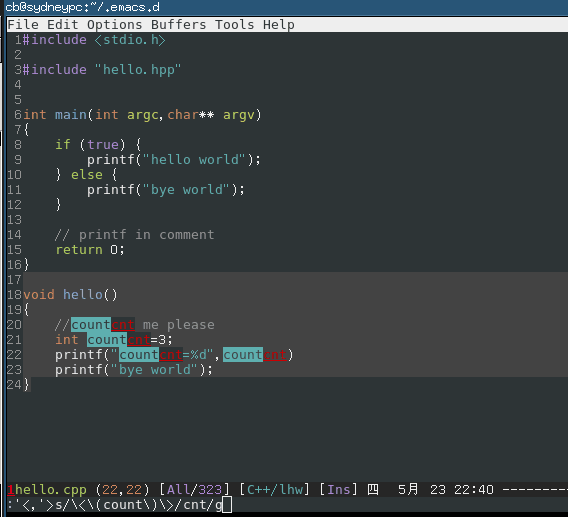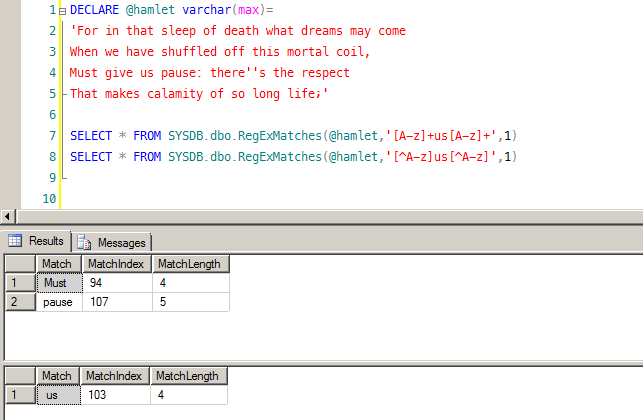

Below is the source code of my function DELIMITER $$ CREATE FUNCTION `regex_replace`(pattern VARCHAR(1000),replacement VARCHAR(1000),original VARCHAR(1000)) RETURNS VARCHAR(1000) DETERMINISTIC BEGIN DECLARE temp VARCHAR(1000) DECLARE ch VARCHAR(1) DECLARE i INT SET i = 1 SET temp = '' IF original REGEXP pattern THEN loop_label: LOOP IF i>CHAR_LENGTH(original) THEN LEAVE loop_label END IF SET ch = SUBSTRING(original,i,1) IF NOT ch REGEXP pattern THEN SET temp = CONCAT(temp,ch) ELSE SET temp = CONCAT(temp,replacement) END IF SET i=i+1 END LOOP ELSE SET temp = original END IF RETURN temp END$$ DELIMITER Note: If you are using MySQL version 5.0.1 or higher, make sure you set the NO_BACKSLASH_ESCAPES mode ON, before you use the above function to replace any characters which are escaped with back slash “”, ie: A,B,etc… See how to set the NO_BACKSLASH_ESCAPES mode here Example on how to use this function mysql> select regex_replace('','','2my test3_text-to. Syntax REPLACE ( string, fromstring, newstring) Parameter Values Technical Details Works in: From MySQL 4. Note: This function performs a case-sensitive replacement. I gave up searching finally and wrote my own “regex_replace” MySQL function. Definition and Usage The REPLACE () function replaces all occurrences of a substring within a string, with a new substring. This section discusses the functions and operators available for regular expression matching and illustrates, with examples, some of the special characters and constructs that can be used for regular expression. This section discusses the operators available for regular expression matching and illustrates, with examples, some of the special characters and constructs that can be used for regular expression operations. A regular expression is a powerful way of specifying a pattern for a complex search. A regular expression is a powerful way of specifying a pattern for a complex search.

#MYSQL REGEX REPLACE INSTALL#
There was one called UDB but that’s also you need to install a module and stuff like that. Whether string matches regular expression. MySQL uses the extended version to support regular expression pattern matching operations in SQL statements.Hi All, Recently I came across a requirement where I had to cleanse the data that I’m inserting in to MySQL database using regular expressions, so I started searching for a function to do this on MySQL, but unfortunately I couldn’t find any. Syntax The following is a basic syntax to use this function in MySQL: REGEXPSUBSTR (expression, pattern, position, occurrence, matchtype) Parameter Explanation The explanation of the REGEXPSUBSTR () function parameters are: expression: It is an input string on which we will perform searching through regular expressions. MySQL and Oracle use Henry Spencer’s implementation of regular expressions, which implements the POSIX 1003.2 standard. Like Oracle, Aurora MySQL Regular Expressions to make complex searches easier. SELECT REGEXP_REPLACE(country_name, '(.)', '\1 ') FROM EMPLOYEES įor more information, see Oracle Regular Expression Support in the Oracle documentation. Get the country with a space after each character for each employee. REGEXP_COUNT('George Washington', 'g', 3, 'c') = 2 įind employees with a valid email address. WHERE REGEXP_LIKE((first_name, '^Ste(v|ph)en$')įind employees with a first name that includes g but not G twice starting at character position 3. This function searches a string for a regular expression pattern and replaces every occurrence of the pattern with the specified string that matches the given. These extend the functionality of regular REPLACE functions by allowing you to search by Regex pattern.


Developed in 1973/74, it parsed and transformed text, using a search formatted as s/regexp/replacement/. X - Ignores white-space characters in the search pattern.įind employees with a first name of Steven or Stephen. Regex replace functions can be traced all the way back to the sed UNIX utility. M - Allows the string to contain multiple lines.


 0 kommentar(er)
0 kommentar(er)
